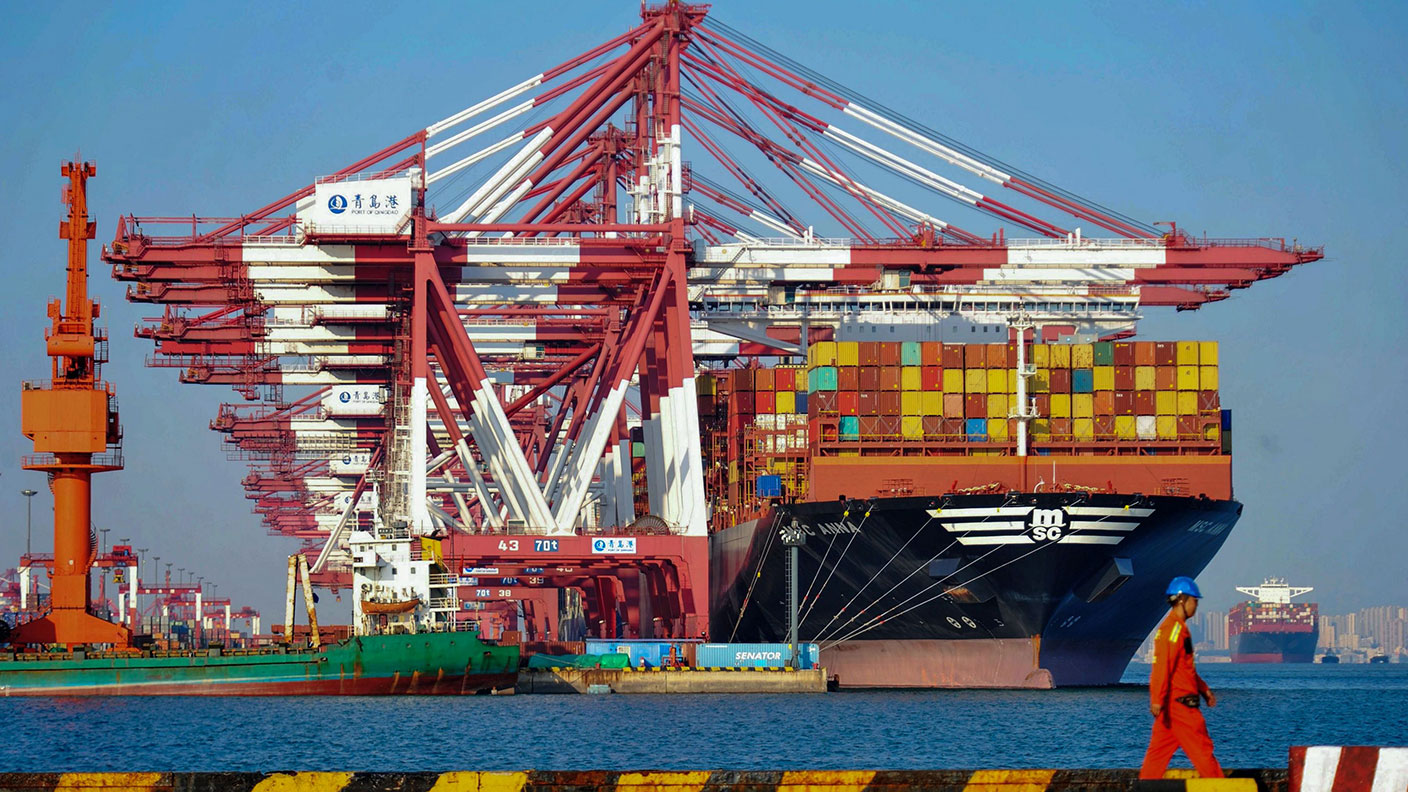RCEP: what the world’s biggest free-trade deal means for your money
The “Regional Comprehensive Economic Partnership” (RCEP), a free-trade deal recently signed by China and 14 other nations, encompasses 30% of the global economy and around two billion people. Here, John Stepek explains its significance


Quick thing before I get started this morning – if you haven’t already subscribed to MoneyWeek, why not give yourself an early Christmas present and get your first six issues free here?
Good news for acronym lovers – on Sunday, one of the biggest trade deals ever was signed in Asia.
The RCEP (Regional Comprehensive Economic Partnership) involved the ten members of Asean (the Association of Southeast Asian Nations), along with China, Japan, South Korea, Australia and NZ (New Zealand – OK, I may be stretching the acronym thing now).
MoneyWeek
Subscribe to MoneyWeek today and get your first six magazine issues absolutely FREE

Sign up to Money Morning
Don't miss the latest investment and personal finances news, market analysis, plus money-saving tips with our free twice-daily newsletter
Don't miss the latest investment and personal finances news, market analysis, plus money-saving tips with our free twice-daily newsletter
So how big a deal is the world’s biggest trade deal, and what might it mean for your money (if anything)?
Trade deals – great fun if you love acronyms
Writing about trade deals is a bit like writing about pensions – there are lots of acronyms, a lot of bureaucracy, a lot of fiddly rules and exceptions, and it all adds up to make them both confusing and deathly boring for lots of people. So I find it also helps to start by simplifying things, so you have a basic model to get hold of.
A pension, for example, is just a big piggy bank for the money you’ll have to live on once you retire. Once you wrap your head around that basic point, it’s easier to talk about the advantages (tax efficiency) and disadvantages (constant rule-changing by successive governments) of using said piggy bank rather than another type of piggy bank (eg, an Isa).
What about trade deals? A trade deal makes it easier for countries to do business with one another. That should be a win-win situation. Everyone gets a wider audience to sell to. Everyone gets a wider range of goods and services to buy. (There are losers as the result of expanded competition, particularly in the labour market. This is the aspect of free trade and globalisation that has caused a lot of political heartache, particularly in the developed world, and it’s important. That said, it shouldn’t blind us to the fact that a lot of people in the developing world have benefited greatly.)
You can think of trade deals in terms of breadth (the number of countries involved) and depth (the extent to which goods and services can trade freely within the region). The European Union is both wide and deep: there are lots of member states, and few barriers to trade in goods (though it’s a different story for services). However, the EU is also a lot more than just a trade union – its idealised end state is a federal Europe, which goes far beyond the ambitions of the average trade deal.
Looking at something a bit closer to the RCEP deal, the more recent Trans-Pacific Partnership (TPP) deal is a more relevant comparator. The TPP was one of former US president Barack Obama’s flagship policies. It was meant to be a key plank in the US “pivot to Asia”. It involved 12 nations, including the US, but excluding China. The goal was to get rid of almost all trade tariffs on goods, and free up trade in services. There were also rules about competition, intellectual property, the digital economy, etc.
So it was quite wide, though not as wide as RCEP. However, TPP suffered a big dent in 2017 when soon-to-be former US president Donald Trump pulled the US out. As a result, it ended up being replaced by the Japan-led “Comprehensive and Progressive” (unsurprisingly, Canada was responsible for the addition of the extra two words). So it ended up being the 11-nation CPTPP, which involved neither the US nor China. Why does that matter? Well, because the US and China are the biggest markets. Ultimately, they’re the ones you want access to in an ideal world.
The real significance of RCEP
By comparison, RCEP is wider. It covers the ten members of Asean (Brunei, Cambodia, Indonesia, Laos, Malaysia, Myanmar, the Philippines, Singapore, Thailand and Vietnam), plus the other four countries mentioned above. That represents 30% of the global economy and around two billion people.
But its ambitions are shallower than TPP’s ever were. In some ways, it’s a bit of a tidying-up exercise. As Tom Miller of research group Gavekal points out, the main achievement is imposing some order on “existing bilateral trade agreements among its members by harmonising tariff schedules and rules of origin for regional trade."
Also it doesn’t involve India, which pulled out last year because it didn’t feel it was getting enough access to China’s services economy in exchange for allowing Chinese manufacturers to compete with its own.
But what probably matters more is the geopolitics of the deal. Going back to TPP – the whole “pivot to Asia” angle on that trade deal was that the US wanted to contain, or at least provide a counterweight, to China’s ambitions and influence in the region. That didn’t work out. And now RCEP – although it was brokered by Asean – has China at its centre, with no place for the US.
Writing for Bloomberg, David Fickling argues that this is not so much about free trade, as the division of the world into spheres of influence once again. As he puts it: “RCEP is increasingly now seen as a sort of Pax Sinica, binding the region into a China-led global order."
That might be too pessimistic. While “America First” policies might have alienated some of America’s allies in the region, China is hardly the most reliable partner either – quite content to use “its trading heft to further unrelated political objectives, regardless of any rules-based trade agreements it may have negotiated”, notes Miller.
Also, RCEP will bring benefits to the region. We already think you should have money in Japan, for example, and while this isn’t a game changer by any means, it will give modest gains due to the scrapping of various tariffs. The same goes for other countries in the deal. (For more on the attractions of Japan, listen to Merryn’s latest podcast with Peter Trasker)
But in terms of what it means for the world, it’s mostly just another sign of the growing competition between the US and China. And it’ll be interesting to see if Joe Biden attempts to convince a hostile Congress (the Democrats are no less suspicious of free trade – indeed, arguably more so – than the Republicans) to join the CPTPP in the future.
Get the latest financial news, insights and expert analysis from our award-winning MoneyWeek team, to help you understand what really matters when it comes to your finances.
John Stepek is a senior reporter at Bloomberg News and a former editor of MoneyWeek magazine. He graduated from Strathclyde University with a degree in psychology in 1996 and has always been fascinated by the gap between the way the market works in theory and the way it works in practice, and by how our deep-rooted instincts work against our best interests as investors.
He started out in journalism by writing articles about the specific business challenges facing family firms. In 2003, he took a job on the finance desk of Teletext, where he spent two years covering the markets and breaking financial news.
His work has been published in Families in Business, Shares magazine, Spear's Magazine, The Sunday Times, and The Spectator among others. He has also appeared as an expert commentator on BBC Radio 4's Today programme, BBC Radio Scotland, Newsnight, Daily Politics and Bloomberg. His first book, on contrarian investing, The Sceptical Investor, was released in March 2019. You can follow John on Twitter at @john_stepek.
-
 Will fintechs change the way you invest?: MoneyWeek Talks
Will fintechs change the way you invest?: MoneyWeek TalksPodcast MoneyWeek's digital editor, Kalpana Fitzpatrick, speaks to Revolut Trading CEO Yana Shkrebenkova about how fintechs are changing the way people approach investing.
-
 Six steps business owners should consider before April inheritance tax relief change
Six steps business owners should consider before April inheritance tax relief changeNew limits to inheritance tax-free allowances are coming in from the Spring that affect business owners. Those looking to sell or transfer their assets into a trust before the changes need to act now
-
 UK wages grow at a record pace
UK wages grow at a record paceThe latest UK wages data will add pressure on the BoE to push interest rates even higher.
-
 Trapped in a time of zombie government
Trapped in a time of zombie governmentIt’s not just companies that are eking out an existence, says Max King. The state is in the twilight zone too.
-
 America is in deep denial over debt
America is in deep denial over debtThe downgrade in America’s credit rating was much criticised by the US government, says Alex Rankine. But was it a long time coming?
-
 UK economy avoids stagnation with surprise growth
UK economy avoids stagnation with surprise growthGross domestic product increased by 0.2% in the second quarter and by 0.5% in June
-
 Bank of England raises interest rates to 5.25%
Bank of England raises interest rates to 5.25%The Bank has hiked rates from 5% to 5.25%, marking the 14th increase in a row. We explain what it means for savers and homeowners - and whether more rate rises are on the horizon
-
 UK inflation remains at 8.7% ‒ what it means for your money
UK inflation remains at 8.7% ‒ what it means for your moneyInflation was unmoved at 8.7% in the 12 months to May. What does this ‘sticky’ rate of inflation mean for your money?
-
 Would a food price cap actually work?
Would a food price cap actually work?Analysis The government is discussing plans to cap the prices of essentials. But could this intervention do more harm than good?
-
 Is my pay keeping up with inflation?
Is my pay keeping up with inflation?Analysis High inflation means take home pay is being eroded in real terms. An online calculator reveals the pay rise you need to match the rising cost of living - and how much worse off you are without it.
